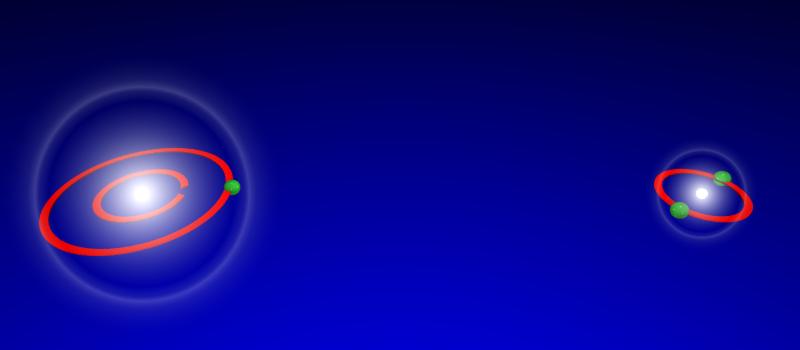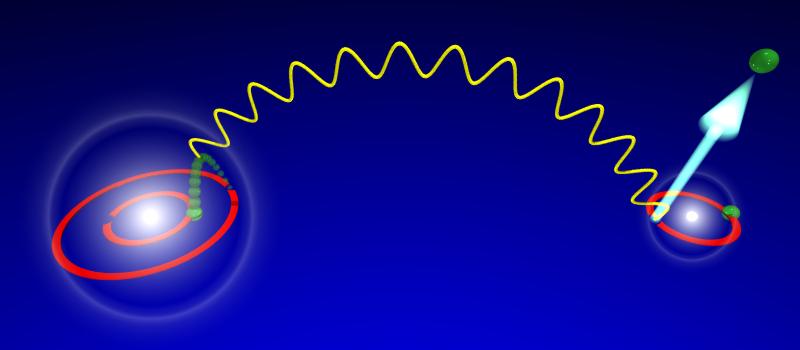Photoionization of the helium dimer – how to ionize two atoms with a single photon
|
We can distinguish two different mechanisms how the absorption of a single photon leads to an ionization of both atoms in a helium dimer. The first process we found can be explained by a billiard-type knockoff-mechanism. Photoionization occurs at one side of the dimer (left side in figure), while the emerging photo-electron scatters at the other center of the dimer-compound. This electron impact on the neutral atom (right atom in figure) causes the ejection of another electron. From the kinetic energy release (KER) gained by the coulomb-explosion of the ions, we could obtain the nuclear wavefunction of the groundstate of the helium dimer. 
More details to the knockoff-process can be found here: The second ionization process, we identified in the helium dimer, is interatomic coulombic-decay (ICD). Thereby, one atom of the dimer is photoionized (left atom), while the ion remains in an excited state (n=2,3,4…). This excited ion can now relax by the transfer of a virtual photon to the neighboring atom (right atom). The absorption of the virtual photon leads to ionization of the second atom. We measured the kinetic energy release (KER) from the coulomb explosion of the two singly charged ions. For the first time, we observed a pronounced structure in the KER-distribution, which can be associated to vibrational excitations in the System of the dimer-ion (He2+*).  
More details can be found here: |